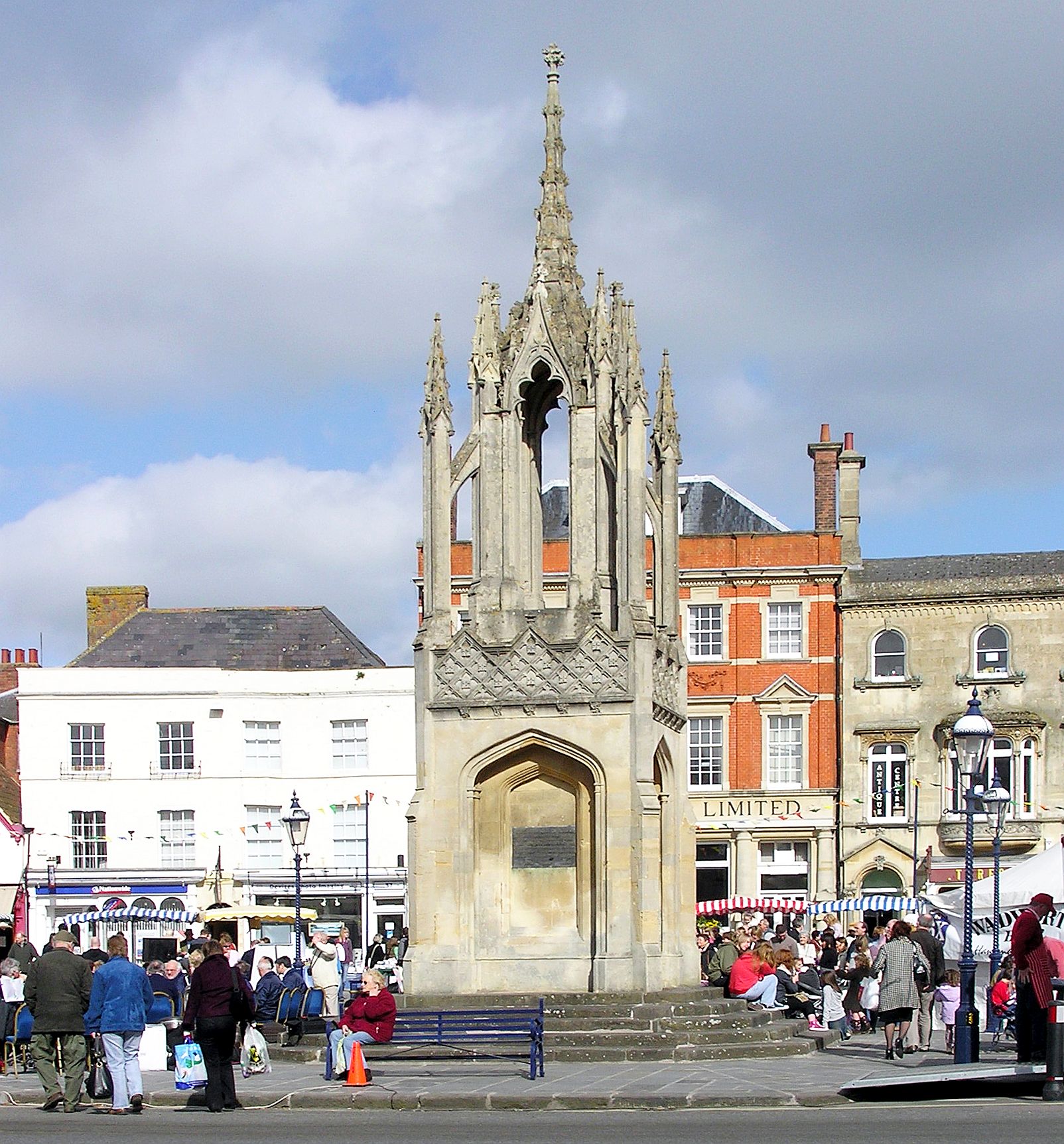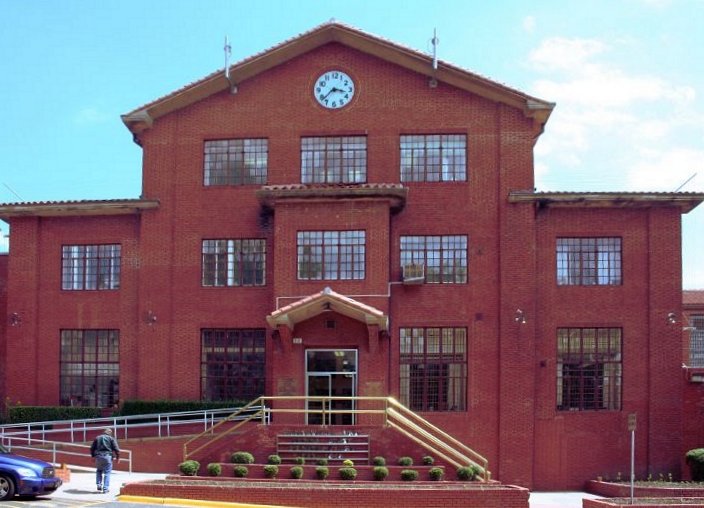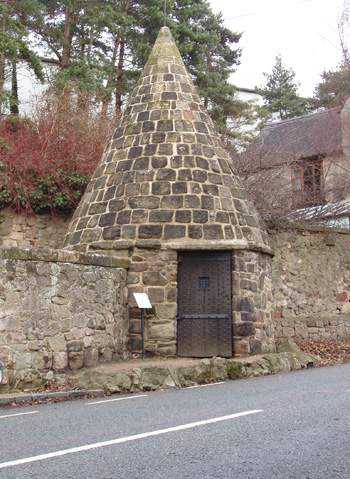|
Devizes Prison
The Devizes County House of Corrections or Devizes Prison was a correctional facility in Devizes, Wiltshire, England. It opened in 1817, replacing the Old Bridewell prison, and fell out of use after around a hundred years. For a time it was the only prison in Wiltshire. The Old Bridewell Devizes Castle was used as a prison for petty criminals in the Wiltshire area until it was destroyed in the 15th century. Wiltshire Justices decided to build a formal house of corrections, following the example of Bridewell Prison, London, which had opened in 1556. A timber-framed building was erected in what is now Bridewell Street (). Completed in 1579, this remained the only bridewell in Wiltshire until c. 1631. It was damaged by fire in 1619 and again in 1630, then re-fronted in brick in 1771. Between 1770 and 1806 various improvements were made to the bridewell after an inmate Thomas Platt died of cold and hunger in custody. By 1806 the prison had 12 cells, 6 yards, an infirmar ... [...More Info...] [...Related Items...] OR: [Wikipedia] [Google] [Baidu] |
Devizes
Devizes is a market town and civil parish in Wiltshire, England. It developed around Devizes Castle, an 11th-century Norman architecture, Norman castle, and received a charter in 1141. The castle was besieged during the Anarchy, a 12th-century civil war between Stephen of England and Empress Matilda, and again during the English Civil War when the Cavaliers lifted the siege at the Battle of Roundway Down. Devizes remained under Royalist control until 1645, when Oliver Cromwell attacked and forced the Royalists to surrender. The castle was Slighting, destroyed in 1648 on the orders of Parliament, and today little remains of it. From the 16th century Devizes became known for its textiles, and by the early 18th century it held the largest corn market in the West Country, constructing the Corn Exchange in 1857. In the 18th century, brewing, curing of tobacco, and Snuff (tobacco), snuff-making were established. The Wadworth Brewery was founded in the town in 1875. Standing at the w ... [...More Info...] [...Related Items...] OR: [Wikipedia] [Google] [Baidu] |
Wiltshire
Wiltshire (; abbreviated Wilts) is a historic and ceremonial county in South West England with an area of . It is landlocked and borders the counties of Dorset to the southwest, Somerset to the west, Hampshire to the southeast, Gloucestershire to the north, Oxfordshire to the northeast and Berkshire to the east. The county town was originally Wilton, after which the county is named, but Wiltshire Council is now based in the county town of Trowbridge. Within the county's boundary are two unitary authority areas, Wiltshire and Swindon, governed respectively by Wiltshire Council and Swindon Borough Council. Wiltshire is characterised by its high downland and wide valleys. Salisbury Plain is noted for being the location of the Stonehenge and Avebury stone circles (which together are a UNESCO Cultural and World Heritage site) and other ancient landmarks, and as a training area for the British Army. The city of Salisbury is notable for its medieval cathedral. Swindon is the ... [...More Info...] [...Related Items...] OR: [Wikipedia] [Google] [Baidu] |
Her Majesty's Prison Service
His Majesty's Prison Service (HMPS) is a part of HM Prison and Probation Service (formerly the National Offender Management Service), which is the part of His Majesty's Government charged with managing most of the prisons within England and Wales (Scotland and Northern Ireland have their own prison services: the Scottish Prison Service and the Northern Ireland Prison Service, respectively). The Director General of HMPS, currently Phil Copple, is the administrator of the prison service. The Director General reports to the Secretary of State for Justice and also works closely with the Prisons Minister, a junior ministerial post within the Ministry of Justice. The statement of purpose for His Majesty's Prison Service states that " isMajesty's Prison Service serves the public by keeping in custody those committed by the courts. Our duty is to look after them with humanity and help them lead law abiding and useful lives in custody and after release". The Ministry of Justice's object ... [...More Info...] [...Related Items...] OR: [Wikipedia] [Google] [Baidu] |
Correctional Facility
In criminal justice, particularly in North America, correction, corrections, and correctional, are umbrella terms describing a variety of functions typically carried out by government agencies, and involving the punishment, treatment, and supervision of persons who have been convicted of crimes. These functions commonly include imprisonment, parole, and probation. Bryan A. Garner, editor, ''Black's Law Dictionary'', 9th ed., West Group, 2009, , 0-314-19949-7, p. 396 (or p. 424 depending on the volume) A typical ''correctional institution'' is a prison. A ''correctional system'', also known as a ''penal system'', thus refers to a network of agencies that administer a jurisdiction's prisons, and community-based programs like parole, and probation boards. This system is part of the larger criminal justice system, which additionally includes police, prosecution and courts. Jurisdictions throughout Canada and the US have ministries or departments, respectively, of corrections, co ... [...More Info...] [...Related Items...] OR: [Wikipedia] [Google] [Baidu] |
Devizes Castle
Devizes Castle was a medieval fortification in the town of Devizes, Wiltshire, England, on a site now occupied by a Victorian-era castle. It is a Grade I listed building. The original castle (not currently visible) was overbuilt by the current structure. Records indicate that the first castle on the site had its origins in about 1080 as an early Norman motte and bailey with wooden pallisade and tower. Medieval building The first motte-and-bailey castle on this site was probably built around 1080 by Osmund, Bishop of Salisbury. It is first mentioned in 1106, when Robert of Normandy was imprisoned in it, and, despite reports, it is not mentioned in the Domesday Book of 1086. It became known by its Latin name ''Castrum ad divisas'', the castle at the boundaries, because it was located at a place where three parishes joined. That later evolved into the word Devizes.http://www.devizesheritage.co.uk/devizescastle.html, Devizes Castle, Devizes, Wiltshirehttps://www.britainexpress.com/at ... [...More Info...] [...Related Items...] OR: [Wikipedia] [Google] [Baidu] |
Bridewell Prison
Bridewell Palace in London was built as a residence of King Henry VIII and was one of his homes early in his reign for eight years. Given to the City of London Corporation by his son King Edward VI for use as an orphanage and place of correction for wayward women, Bridewell later became the first prison/poorhouse to have an appointed doctor. It was built on the banks of the Fleet River in the City of London between Fleet Street and the River Thames in an area today known as Bridewell Place, off New Bridge Street. By 1556 part of it had become a jail known as Bridewell Prison. It was reinvented with lodgings and was closed in 1855 and the buildings demolished in 1863–1864. The name "Bridewell" subsequently became a common name for a jail, used not only in England but in other cities colonised by Britain including Dublin, Chicago and New York. History Bridewell Palace The palace was built on the site of the medieval St Bride's Inn directly south of St Bride's Church at a ... [...More Info...] [...Related Items...] OR: [Wikipedia] [Google] [Baidu] |
Village Lock-up
A village lock-up is a historic building once used for the temporary detention of people in England and Wales, mostly where official prisons or criminal courts were beyond easy walking distance. Lockups were often used for the confinement of drunks, who were usually released the next day, or to hold people being brought before the local magistrate. The archetypal form comprises a small room with a single door and a narrow slit window, grating or holes. Most lock-ups feature a tiled or stone-built dome or spire as a roof and are built from brick, stone and/or timber. Such a room was built in many shapes; many are round, which gives rise to a sub-description: the punishment or village round-house. Village lock-ups, though usually freestanding, were often attached to walls, tall pillar/tower village crosses or incorporated into other buildings. Varying in architectural strength and ornamentation, they were all built to perform the same function. Nicknames and forms They have acqui ... [...More Info...] [...Related Items...] OR: [Wikipedia] [Google] [Baidu] |
Wiltshire Constabulary
Wiltshire Police, formerly known as Wiltshire Constabulary, is the territorial police force responsible for policing the county of Wiltshire (including the Borough of Swindon) in South West England. The force serves 722,000 people over an area of . In terms of officer numbers, it is the second smallest force in the United Kingdom (after the City of London Police). History Before the 1830s, policing in Wiltshire was the responsibility of petty and parish constables, who were supervised by magistrates. This was largely ineffective as they were unpaid and untrained, and so independent and private forces such as the Devizes Prosecution Society emerged, and these did not immediately disappear when professional police forces came into being. The Municipal Corporations Act 1835 standardised the structure and responsibilities of borough councils in England and Wales, including requiring they provide a professional police force. The Act applied both to new boroughs formed on applicati ... [...More Info...] [...Related Items...] OR: [Wikipedia] [Google] [Baidu] |
Kennet And Avon Canal
The Kennet and Avon Canal is a waterway in southern England with an overall length of , made up of two lengths of navigable river linked by a canal. The name is used to refer to the entire length of the navigation rather than solely to the central canal section. From Bristol to Bath the waterway follows the natural course of the River Avon before the canal links it to the River Kennet at Newbury, and from there to Reading on the River Thames. In all, the waterway incorporates 105 locks. The two river stretches were made navigable in the early 18th century, and the canal section was constructed between 1794 and 1810. In the late 19th and early 20th centuries, the canal gradually fell into disuse after the opening of the Great Western Railway. In the latter half of the 20th century the canal was restored in stages, largely by volunteers. After decades of dereliction and much restoration work, it was fully reopened in 1990. The Kennet and Avon Canal has been developed as a pop ... [...More Info...] [...Related Items...] OR: [Wikipedia] [Google] [Baidu] |
Richard Ingleman
Richard Ingleman (1777–1838) was a surveyor and architect of Southwell in Nottinghamshire, England. Initially his architectural practice was based on the Southwell area, but he won widespread respect for his designs for the Southwell House of Correction (1807–8). This led to his gaining major commissions for prisons and mental hospitals, particularly in Wiltshire and at Oxford. Life and career Richard Ingleman was the son of Francis Ingleman, a surveyor and builder of Southwell, and the grandson of Richard Ingleman, a mason who repaired Southwell Minster after a lightning strike in 1711. Richard Ingleman is first noted as a Surveyor to the fabric of Southwell Minster, a position he held from 1801 to 1808. In 1807 he designed the Southwell House of Correction, a prison which was seen as a model for other prisons. This operated the ''silent system'' which required the prisoners to work in groups and to remain silent at all times. This was to give him an interest in prison an ... [...More Info...] [...Related Items...] OR: [Wikipedia] [Google] [Baidu] |
Salisbury
Salisbury ( ) is a cathedral city in Wiltshire, England with a population of 41,820, at the confluence of the rivers Avon, Nadder and Bourne. The city is approximately from Southampton and from Bath. Salisbury is in the southeast of Wiltshire, near the edge of Salisbury Plain. Salisbury Cathedral was formerly north of the city at Old Sarum. The cathedral was relocated and a settlement grew up around it, which received a city charter in 1227 as . This continued to be its official name until 2009, when Salisbury City Council was established. Salisbury railway station is an interchange between the West of England Main Line and the Wessex Main Line. Stonehenge is a UNESCO World Heritage Site and is northwest of Salisbury. Name The name ''Salisbury'', which is first recorded around the year 900 as ''Searoburg'' ( dative ''Searobyrig''), is a partial translation of the Roman Celtic name ''Sorbiodūnum''. The Brittonic suffix ''-dūnon'', meaning "fortress" (in reference ... [...More Info...] [...Related Items...] OR: [Wikipedia] [Google] [Baidu] |
HM Prison Erlestoke
HM Prison Erlestoke is a Category C men's prison, to the east of the village of Erlestoke in Wiltshire, England. Erlestoke is operated by His Majesty's Prison Service, and is the only prison in Wiltshire. Erlestoke House The prison is built around Erlestoke House, a country house built by Joshua Smith, MP for Devizes, between 1780 and 1810. The estate was sold in 1919 and for a time a tenant of the new owner used the main house as a guest-house. From 1939 it was the home of the Army's Senior Officers' School; in 1950 the central house was severely damaged by fire but the school continued in the wings until 1961. A single-storey lodge from the early 19th century stands at the roadside entrance to the grounds of the house. The lodge, together with gate piers and wrought iron railings of similar date, is Grade II listed. Prison history The site was first used by the Prison Commission in 1960 as a detention centre, and many buildings were added in the grounds of Erlestoke H ... [...More Info...] [...Related Items...] OR: [Wikipedia] [Google] [Baidu] |





.jpg)
